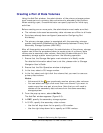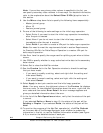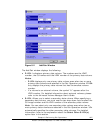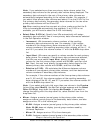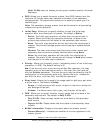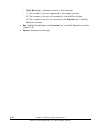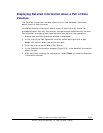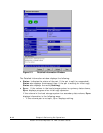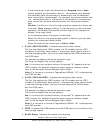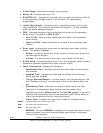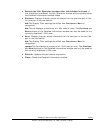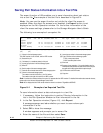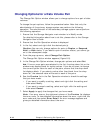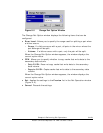
Chapter 8 Performing Pair Operations 8-13
Hitachi Universal Replicator for IBM /OS User’s Guide
– If the volume pair is split and therefore is in Suspend status, Sync.
usually displays synchronization rate (i.e., concordance rate) between
the secondary data volume before it became split and the secondary
data volume after it became split. For example, the synchronization rate
(i.e., concordance rate) is 100 percent if the contents of the secondary
data volume are the same before and after the volume pair became
split.
Caution: If a failure in the initial copy operation causes the volume pair
to be split, Sync. displays nothing. If a failure occurs in the initial copy
operation, the Detailed Information window (
Figure 8-3) displays the
phrase "Initial copy failed".
– In the following cases, this column will be blank.
When the volume in the local storage system is neither a primary data
volume nor a secondary data volume.
When the status of the volume pair is Hold or Hlde.
• P-VOL (LDKC:CU:LDEV): Indicates the primary data volume.
The first line displays the LDKC number, the CU number and the LDEV
number of the primary data volume. If the primary data volume exists in
the local storage system, the first line also displays the CLPR number and
the CLPR name.
The second line displays the device emulation type.
The third line displays the volume capacity.
Note: If a volume is an external volume, the symbol "#" appears after the
LDEV number. For detailed information about external volumes, please
refer to the Universal Volume Manager User's Guide.
Note: If a volume is a volume of TagmaStore USP
/NSC, “00” is displayed as
the LDKC number.
• S-VOL (LDKC:CU:LDEV): Indicates the secondary data volume.
The first line displays the LDKC number, the CU number and the LDEV
number of the secondary data volume. If the secondary data volume exists
in the local storage system, the first line also displays the CLPR number
and the CLPR name.
The second line displays the device emulation type.
The third line displays the volume capacity.
Note: If a volume is an external volume, the symbol "#" appears after the
LDEV number. For detailed information about external volumes, please
refer to the Universal Volume Manager User's Guide.
Note: If a volume is a volume of TagmaStore USP
/NSC, “00” is displayed as
the LDKC number.
• CLPR: Indicates the CLPR number and the CLPR name of the volume in the
local storage system.
• M-JNL Group: Indicates the master journal group.



